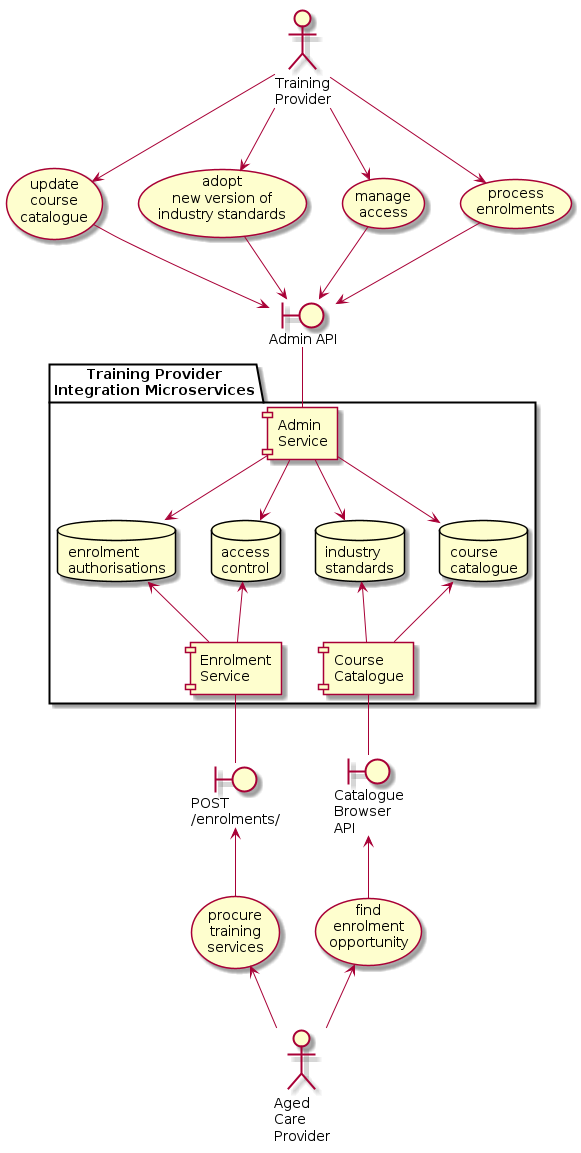ACWIC Training Provider Integration Microservices¶
There is on of two suites of microservices. This provides the API endpoints operated by Training Providers, so they can administer their integration and so their customers (Aged Care Providers) can browse their catalogue and procure taining services.
The code for this site is hosted at https://github.com/ACWIC/training-provider-coordinator
The compliment to this suite is one for Aged Care Providers, documented at {other document url}.
diagram: this one coloured (other one grey)
The purpose of this repository is to demonstrate how the suite of microservices can be hosted. Two methods are supported:
Using docker-compose. Fully self-contained (including backing services). Actively used for development and testing, also an example of how it might be deployed in any container-hosting environment.
Using Amazon Web Services (AWS). Specifically; AWS Lambda (serverless compute platform), using an API Gateway and S3 storage service. This is an example of hosting the system using cost-effective utility infrastructure.
The README file at https://github.com/ACWIC/training-provider-coordinator/blob/main/README.md contains technical documentation on these deployment scenarios.
The AWS deployment demonstrates how the system can be hosted with at negligible operating cost. In this configuration, annual operating cost for a SME training provider would be approximately equivalent to one cup of coffee (if not entirely free, likely to fit within the constraints of AWS Free Tier).
Large scale training providers are likely to need sophisticated integration with existing systems. In that situation, these microservices could be used as a proxy layer or equivalent endpoints could be surfaced on existing systems. The purpose of supporting interoperability through standaisation is served either way.
Components¶
The microservice suite is provided by three components.
Admin Service, used by the Training Provider to maintain access, publish their course catalogue and process enrolments. Because this is used privately by the Training Provider, it does not form part of the 3rd party integration surface and could be safely omitted in implementations where there more convenient methods exist.
Enrolment Service, used by Aged Care Providers to procure training services.
Course Catalogue, used by Aged Care Providers to discover opportunities to enroll staff in training that will meet their needs.

Each of these components has an open-source reference implementation that demonstrates the API using a low-cost object-store backing service.
Admin Service¶
Documentation https://acwic-training-provider-admin.readthedocs.org
Source Code: https://github.com/ACWIC/training-provider-admin
Live Endpoints:
Enrolment Service¶
Documentation: https://acwic-training-provider-enrolment.readthedocs.org
Source Code: https://github.com/ACWIC/training-provider-enrolment
Live Endpoints:
Course Catalogue¶
Documentation: https://acwic-training-provider-catalogue.readthedocs.org
Source Code: https://github.com/ACWIC/training-provider-catalogue
Live Endpoints: